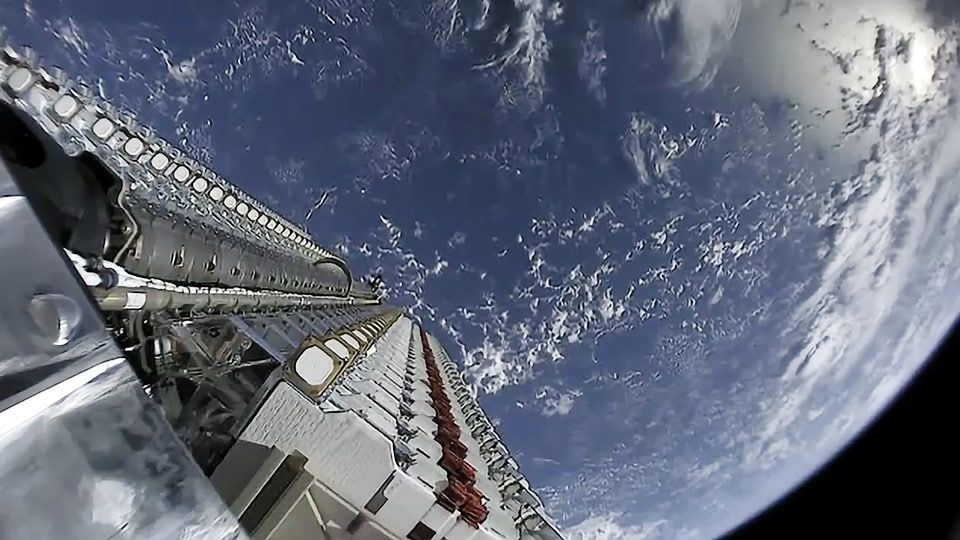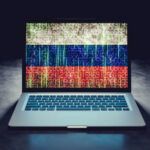How civil society can help monitor and verify nuclear arms control
By Sara Al-Sayed | February 23, 2023
 A video frame from the launch of the first set of Starlink satellites, May 24, 2019. (SpaceX)
A video frame from the launch of the first set of Starlink satellites, May 24, 2019. (SpaceX)
In the first year of the COVID-19 pandemic, when researchers were struggling to understand the spread and effects of a novel virus that was making its way throughout the globe, they turned to citizens to collect real-time data. From India to the United States, people submitted information for scientists to analyze. This wasn’t the only time communities have aided in data collection and analyses. In 2018, for example, an amateur astronomer made contact with a lost NASA spacecraft, and in 2020 researchers reported new auroral forms, thanks to photographs of the skies of Finland and Sweden taken by citizens.
The developments in information and communication technologies have led to a proliferation of tools for large-scale data collection and analysis and information dissemination that are easy-to-use, seemingly accessible to everyone, anywhere, at a non-prohibitive financial cost. The vigilant monitoring and meticulous documentation of concerning activities in the context of the Russia–Ukraine war is the latest evidence of the surge in citizen-driven surveillance practices, using free and commercial satellite imagery and georeferencing tools, but also capitalizing on social media platforms to gather and spread information. This suggests that civil society can play a role in the monitoring and verification of treaties for nuclear nonproliferation, arms control, or disarmament. Manhattan Project physicist and co-founder of the Pugwash Conferences on Science and World Affairs Joseph Rotblat’s vision of a nuclear weapons-free world through what he dubbed “societal verification” could, at last, materialize.
Certainly, civil society has been involved in the monitoring, if not, in some cases, verification, of international agreements. Those issue areas include human rights, the environment, landmines and cluster munitions, small arms and light weapons, and chemical and biological weapons—ordered according to decreasing level of internationally formally recognized civil society involvement. That is, civil society involvement tends to decrease as weapons of mass destruction become the issue of concern, despite the expansion of technological possibilities. This is all to say that nuclear weapons issues have traditionally been viewed by the dominant stakeholder states largely through a narrow national security lens, where secrecy is the order of the day and intelligence gathering and analysis remain the province of primarily government employees or intergovernmental organizations, to the exclusion of civil society. It could be said then that when it comes to the verification of longstanding nuclear weapons treaties, it’s as though a firewall has been erected to keep civil society out.
Scrutinizing the extent of the democratization of the nuclear monitoring and verification space achieved to date through technologies of surveillance, it’s clear there needs to be more inclusive participation of governmental and non-governmental stakeholders. This will lead to widespread confidence in progress on nuclear nonproliferation, arms control, and disarmament. Calls for civil society involvement in monitoring and verification have a track record, though past proposals and contemporary efforts differ in the modes and objectives of involvement, revealing different conceptions of international security and levels of commitment to the holy grail of nuclear disarmament. The United Nations efforts to democratize the use of outer space could profitably be expanded, to aid in empowering civil society everywhere to participate in the nuclear monitoring and verification space and thereby more expediently achieve lasting nuclear security.
Impediments to the democratization of nuclear monitoring and verification. Access to technologies required for monitoring and verification is geographically unequal. Moreover, the watchful gaze of these technologies is focused manifestly on certain locations more than others. The impediments that result in unequal access and/or unequal targeting are technical, economic, social, or political in nature.
Free and commercial Earth-observation (EO) satellite imagery could potentially be used for nuclear treaty monitoring and verification, but there are three impediments to equal access and targeting: the acquisition of satellite imagery of the target area, imagery analysis (from pre-processing to the final assessment of treaty non-compliance), and the reporting of assessments.
Let’s consider acquisition. Technically, the motivation to acquire imagery, despite accessibility, could be in short supply. The reasons may be social or political. Or, even in the presence of motivation, the technical skill to use satellite technology may be lacking. Nuclear treaty verification after all requires imagery acquisition at a desired spatial and spectral resolution, cadence, and image quality, and those involved must remain attuned to adversarial tactics potentially employed by the observed party (like denial or concealment).
Moreover, Earth-observation satellite operators and third-party providers offering their imagery are concentrated in the West. Herein, a political impediment arises; operators or third-party providers may face a conflict of interest—after all, the government in a country hosting these operators or providers might itself be a non-trivial client to their services, the United States being no exception. Also, Earth-observation satellite systems might be the target of military attacks, as a threat issued last year by the Russian Federation in the First Committee of the 77th Session of the United Nations General Assembly suggests. Admittedly, this problem all but disappears by picking and choosing, or aggregating, services from other operators or providers.
Finally, there is still a non-negligible financial cost involved in imagery acquisition, especially if satellite tasking or priority scheduling were to be sought to achieve the desired monitoring or verification objectives. And this is to say nothing of the cost of subsequent analysis that also gives due diligence to the attendant technical issues of imagery authentication and validation.
Those involved in reporting assessments of treaty non-compliance will also face challenges. Such reporting is predicated on the availability of an impartial verification body and/or neutral media to be reported to. Further, technical and institutional arrangements need to be in place for the preservation of reporters’ anonymity and privacy and for protection from retaliation and prosecution.
The imbalance in access to and targeting of satellite surveillance gives rise to an international order that is asymmetrically transparent. Considering the predominant focus on countries like Iran, North Korea, and recently, China, the world is disproportionately illuminated for the eyes of a privileged group and in the service of narrowly defined national security interests. This asymmetric transparency has implications for international peace and security and progress on nuclear nonproliferation, arms control, and disarmament. Evidently, the world is a far cry from a see-through one of mutually assured surveillance where reciprocal trust among states could potentially thrive. And today’s lopsided transparency in a world rife with mistrust could compromise face-saving diplomacy, if not drive arms racing dynamics and reinforce a hazardous status quo, as I argued in a recent critique.
Historical form of societal verification. Although Rotblat coined the term “societal verification” in his 1992 article “Towards a Nuclear Weapon-Free World: Societal Verification,” the idea was not new. It was touted as early as 1946 by Leo Szilard, Manhattan Project physicist and inventor, in his essay “Can We Avert an Arms Race by an Inspection System?” and then between 1958 and 1962 by several others, including by Leo Szilard again in 1961 in his inventive and satirical book, The Voice of the Dolphins. The heart of the concept of societal verification from the 1950s and 1960s—when it was popularly referred to as “inspection by the people”—to Rotblat’s 1992 formulation posited that, in addition to an official treaty-agreed monitoring and verifying entity, an informal inspectorate based on citizen reporting, watchdog organizations, or whistleblowing of treaty violations should be established.
The rationale that drove the authors’ proposals is the observation that some aspects of illicit nuclear activity, such as personnel recruitment, equipment procurement, or stockpile transportation, are too conspicuous to escape the attention of citizens at various degrees of proximity to elements of a state’s nuclear complex.
Notably, Rotblat, Szilard, and the others believed that secrecy around government activities should be stigmatized and outlawed. Some of them even extended this belief to general scientific practice, in both its material and immaterial aspects.
Most important, the authors believed citizens should have a sanctioned right and duty to report violations of international agreements—such reporting shouldn’t be regarded as a criminal act. They accordingly thought agreements should include provisions to protect reporters of violations from retaliation and grant them political asylum or rewards. Domestic laws would need to be adapted to this effect upon agreement ratification.
Contemporary forms of societal verification. Based on current practices and intellectual efforts, contemporary societal verification falls into one of three classes.
The first involves non-governmental organization efforts in the West that use free or commercial satellite imagery and other open-source data to detect suspicious nuclear activity; these efforts constitute what is known as the nuclear non-state open-source intelligence (OSINT) community. The second consists of crowdsourcing initiatives, such as satellite imagery annotation by the James Martin Center for Non-Proliferation Studies’ Geo4Nonpro Project (2016 to 2020) and the Open Nuclear Network. These types of efforts also include the creation of repositories of knowledge and tools by the Nuclear Threat Initiative for counter-proliferation tactics (2015) and by the International Atomic Energy Agency (IAEA) for safeguards verification (2016 and 2017).
While the first and second classes of contemporary societal verification resonate with aspects of Rotblat’s conception—the efforts are undertaken by non-state rather than state actors—the third class represents a curious reframing of the classical concept. In the new frame, the use by states or international organizations of information generated on the internet by individuals or expert communities anywhere could be considered a mode of societal verification. Epitomizing this third class is the IAEA’s Modernization of Safeguards Information Technology (MOSAIC). Completed in 2018, the project revamped the agency’s information technology system so it can collect and analyze at least a hundred-fold more pieces of open-source information than before, better identifying relationships and patterns among the data. The IAEA state-level approach certainly provides sufficient pretext for data collection and analysis at such a scale.
The aforementioned practices have a couple of things in common. First, the relevant information is being generated by non-state actors, either wittingly or unwittingly. Second, conceptually and practically, the IAEA and the patron states of the present nuclear order tend to capitalize on every piece of generated information that’s of potential relevance to nuclear risk assessment, wherever it may be found and through whatever available means. This blurs the line between “national technical means”—which refers to intelligence tools owned and used by governments for remote monitoring, with the gathered intelligence generally not publicly shared—and “public technical means.”
A role for the United Nations. The United Nations system and its related capacity-building activities could be made to serve as a leveler of the remote-sensing playing field. The United Nations Office for Outer Space Affairs (UNOOSA) has the mission of “promoting international cooperation in the peaceful use and exploration of space, and in the use of space science and technology for sustainable economic and social development, particularly for the benefit of developing countries.” The office’s current areas of focus are biodiversity and ecosystems, climate change, disaster management, environmental monitoring and natural resource management, global health, global navigation satellite systems, and communication satellites.
Crucially, the United Nations Office for Outer Space Affairs’ capacity-building activities include the dissemination of knowledge and training towards the development and use of space-related technologies, in pursuit of reaping the “benefits of space.” The areas standing to reap benefits span agriculture, global health, environment, sustainable development, disasters, education, human settlements, R&D, transportation, communication, humanitarian assistance, and—of relevance to the discourse on nuclear weapons and other weapons of mass destruction—international peace and security.
Indeed, the United Nations Office for Outer Space Affairs recognizes the linkage between space science and technologies and international peace and security. For example, its work supports The Treaty on Principles Governing the Activities of States in the Exploration and Use of Outer Space, including the Moon and Other Celestial Bodies (“Outer Space Treaty”) that entered into force in 1967 and provides the framework for international space law. The treaty establishes the basic principles for the peaceful use of outer space, among which is the prohibition on placing nuclear weapons or other weapons of mass destruction in orbit or on celestial bodies or stationing them in outer space in any other manner. The United Nations Office for Outer Space Affairs also supports ongoing discussions on the implementation of transparency and confidence-building measures in outer space.
The use of space for the monitoring of nuclear weapons treaties is conspicuously absent from the discussions on outer space affairs. This says as much about the lack of readiness for a world of mutually assured surveillance as it does about the narrow view of peace and security upholding the current world order.
The merits of engaging the United Nations Office for Outer Space Affairs in nuclear activity monitoring and verification are threefold. The first is pragmatism: The tools are the same, and the greater chunk of the capacity-building resources are in place, cross-provided as well by several coordinated international Earth observation efforts like the Committee on Earth Observation Satellites, Group on Earth Observations, and the World Meteorological Organization World Space Program. Second, the engagement of the United Nations Office for Outer Space Affairs as an entity concerned with sustainable social and economic development connects to present discourse promoted by the humanitarian initiative on nuclear weapons; it links the goals of nuclear nonproliferation, arms control, and ultimately disarmament to human security-type ends, centering individuals and communities.
The third argument for expanding the remit of the United Nations Office for Outer Space Affairs is one of appeal: Such a policy recommendation chimes with certain states’ preferences to join disarmament verification education initiatives to the UN framework. This much is suggested by Brazil’s “Proposal on the establishment of a multilateral Group of Scientific and Technical Experts on Nuclear Disarmament Verification (GSTE-NDV) within the Conference on Disarmament” submitted in April 2019. According to the proposal, the group should be of equitable composition, open to experts from both nuclear-armed and non-nuclear armed states, drawn from across regions. Moreover, it is believed that the group’s establishment within the United Nations framework would, by virtue of striving for inclusive membership, count as a confidence-building measure.
Engaging the United Nations Office for Outer Space Affairs capacity building in the context of nuclear disarmament would be an attempt at conferring technical and political substance onto this ongoing diplomatic initiative while reinforcing Article I of the Outer Space Treaty, which affirms that the “exploration and use of outer space […] shall be carried out for the benefit and in the interests of all countries, irrespective of their degree of economic or scientific development, and shall be the province of all mankind.” And, while widening the scope of this office’s capacity-building activities to encompass nuclear weapons treaty monitoring wouldn’t knock down the nuclear firewall overnight, it would at least pave an inroad to a genuine democratization of outer space.
Together, we make the world safer.
The Bulletin elevates expert voices above the noise. But as an independent nonprofit organization, our operations depend on the support of readers like you. Help us continue to deliver quality journalism that holds leaders accountable. Your support of our work at any level is important. In return, we promise our coverage will be understandable, influential, vigilant, solution-oriented, and fair-minded. Together we can make a difference.
Keywords: UN, arms control, disarmament, nuclear proliferation, satellite, space
Topics: Disruptive Technologies, Nuclear Weapons















